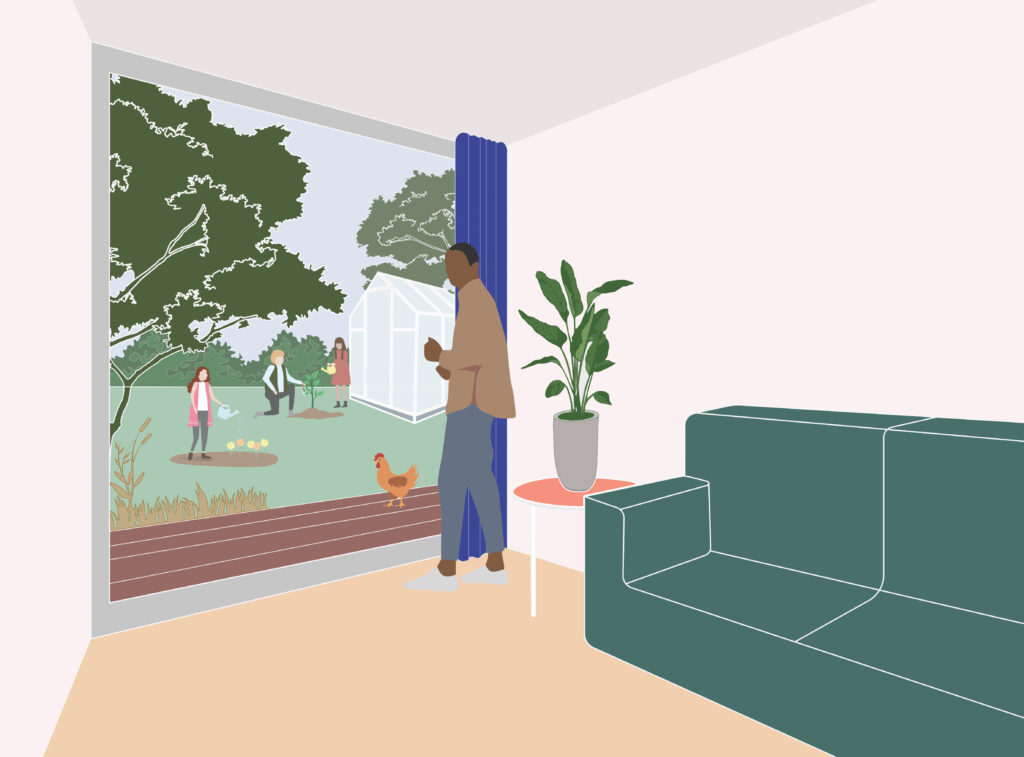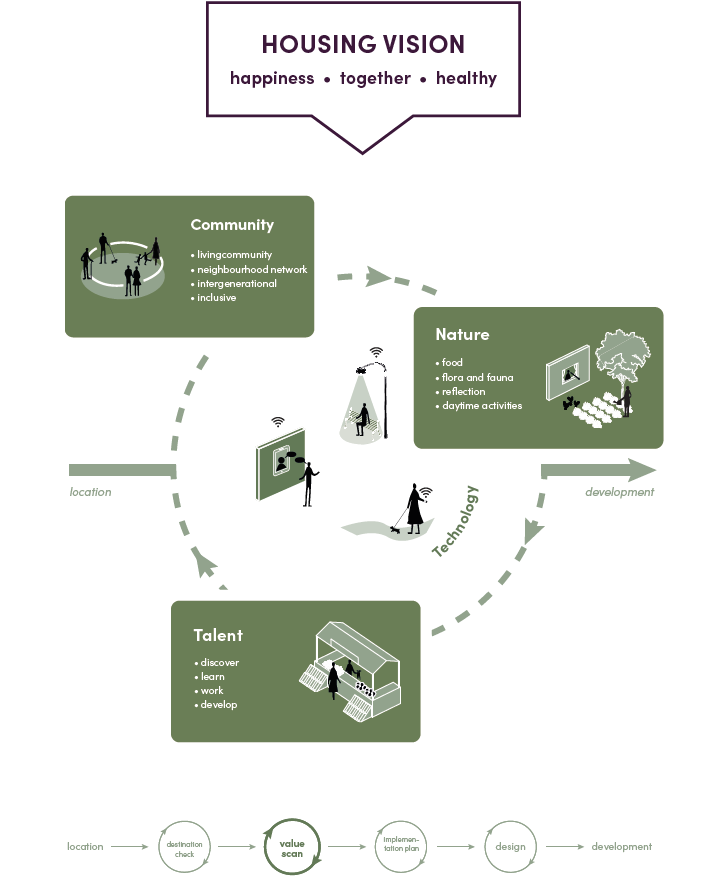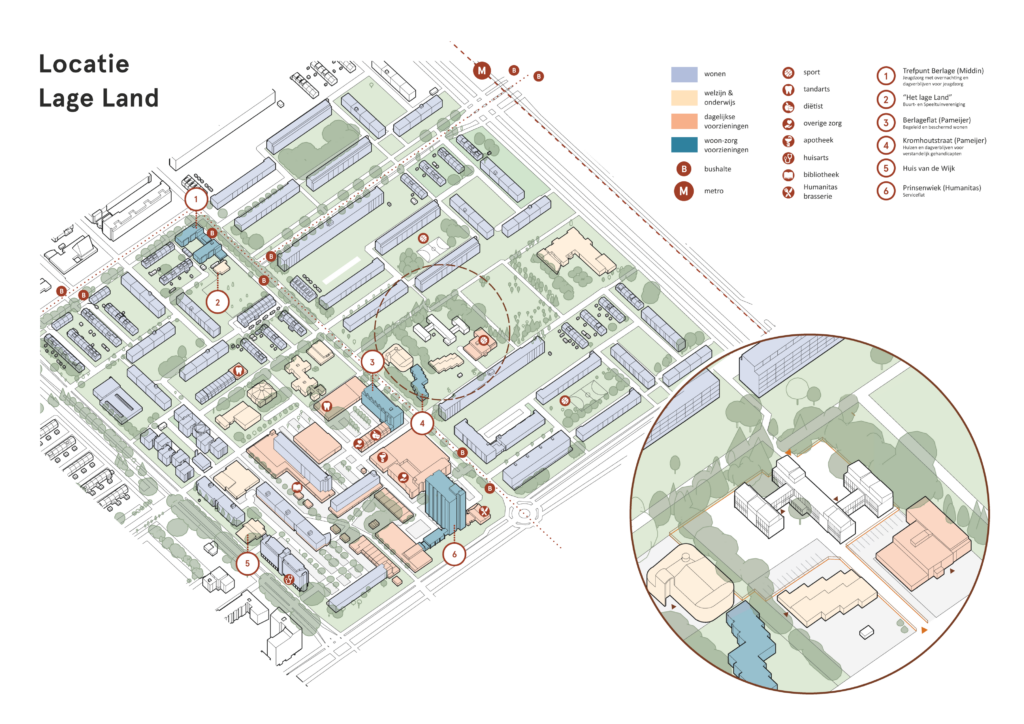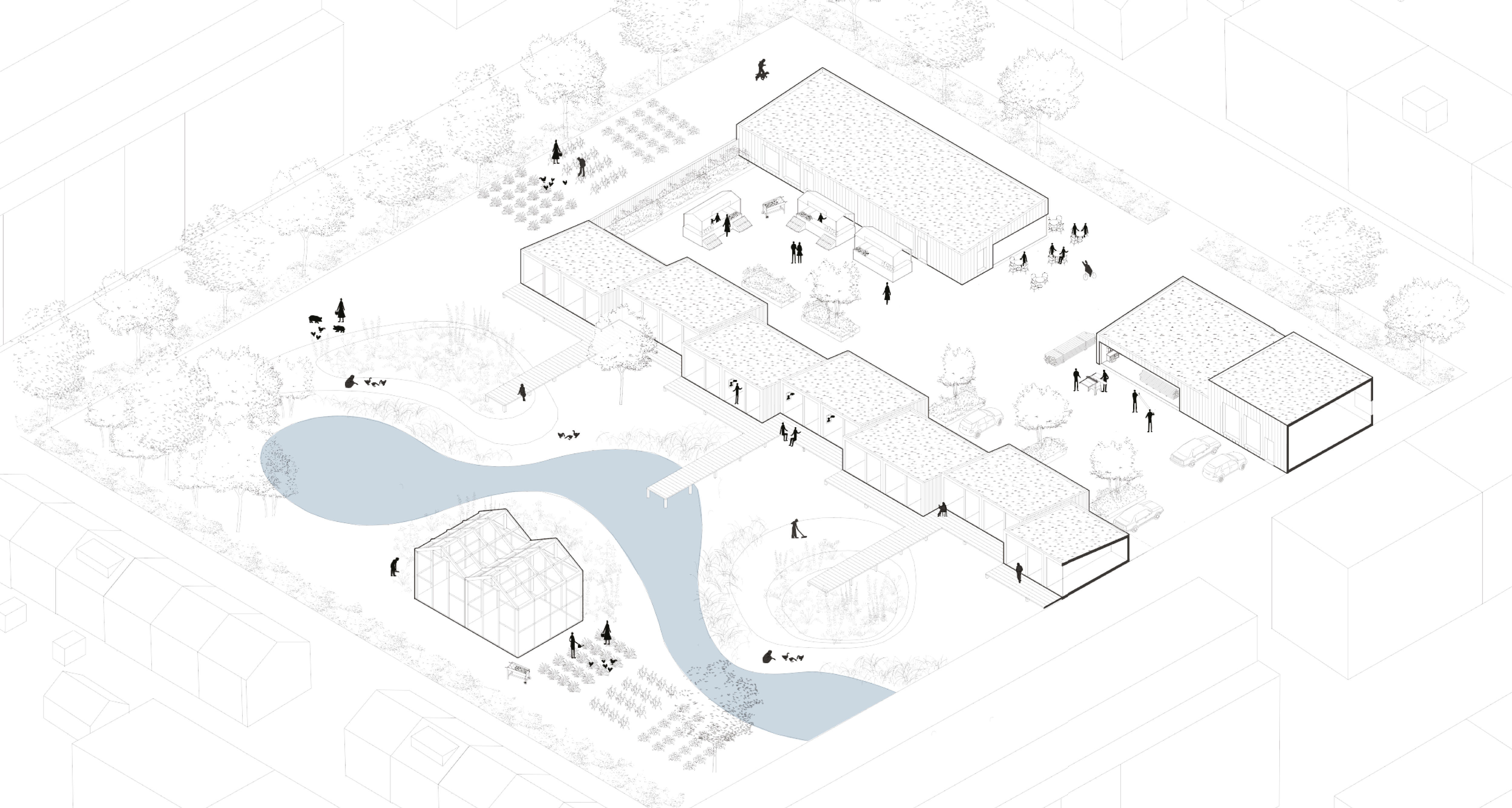
vision and development tool for healthcare housing
rotterdam, NL | 2020 – 2021 | vision | housing, community, talent development, nature | healthcare provider
The Residential Vision can best be captured in the term ‘healing environment’; the living environment is so intelligently designed that it makes a direct contribution to the happiness and well-being of the residents. The living environment is regarded as an ‘ecosystem’ in which all parts are in such a balance with each other that formal care and support can be kept to a minimum.
The ecosystem facilitates connection because it is based on the principles of reciprocity; the system is aimed at encounters between various target groups. This contributes to community building and offers residents and other stakeholders the opportunity to discover and develop their individual talents.

Special emphasis is placed on the significance of food. Both when it comes to production and daytime activities, as well as the opportunity for social connection and maintaining a healthy lifestyle. The living environment offers space for reflection, by creating places where people can retreat in silence. By applying smart technology (AI), residents are naturally supported in comfortable and independent living.

The tool has been developed to test potential locations on the values of the residential vision, and to take further steps in the process of formulating the program of requirements, design and implementation on site. Values driven project development. The tool has been tested in several case studies across The Netherlands.
Location ‘Rotterdam Lage Land’ is a housing project for mentally challenged people. The building, a former school, is located in a secluded spot in the neighbourhood. In order to let the vulnerable group of residents become part of an ecosystem, a good connection with the social context is necessary. The high density of facilities and presence of many organizations / providers in the urban district offer the opportunity to use building blocks such as work, learning and care as a bridge between a resident and the district. By organizing facilities at the residential location, meetings with local residents are stimulated. The scale of collectivity is increased and a greater diversity of target groups is reached, improving the quality of life.

